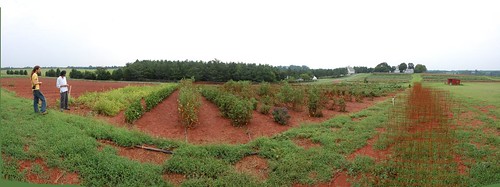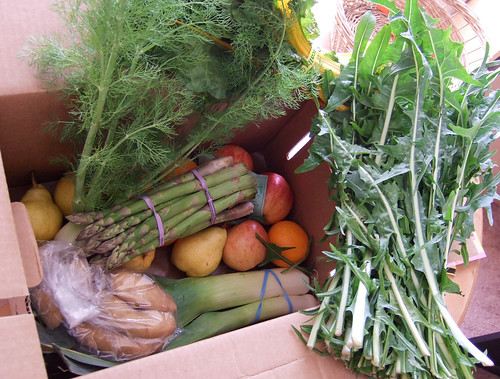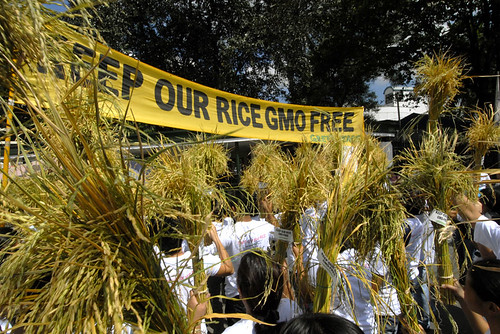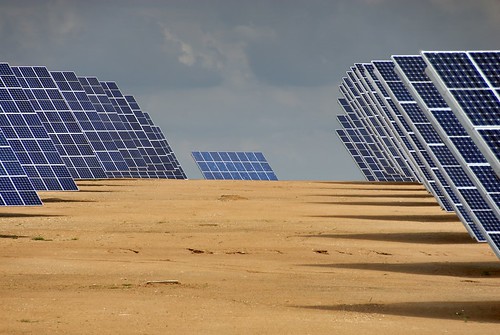Planet Diversity Congress
Reasons for Acting
Loss of biodiversity and climate change caused by man are arguably the most formidable ecological threats humankind has ever faced. The effects of these two, closely interdependent phenomena may be encountered as natural catastrophes threatening our civilisation. However, they are themselves the effects of a presently dominant concept of civilisation. Can these truly global challenges be met by the same set of technological and political principles and means that actually led us to this critical point of human as well as natural history? Food and agriculture lie at the very heart of the problem. Further acceleration of present trends to industrialise, homogenize and globalise industrial food production are certainly not the solution but rather a recipe for disaster.
We will organise a global festival and congress of Diversity in May 2008, during the Meeting of the Parties to the Convention on Biological Diversity and their Protocol on Biosafety in Bonn, Germany. In holding the event parallel to these significant international meetings, we also aim to impact and lobby the government negotiations, especially those on liability and redress for damage caused by GMOs. "Planet Diversity" will celebrate natural and agricultural biodiversity, the cultural diversity of food and agriculture. Its primary goal is to discuss how farmers, consumers, food producers and their communities can cooperate to enrich and defend this diversity.
We see a global movement from different directions coming together for the common cause of defending diversity against destructive and threatening tendencies in agricultural production, land use and food production. The initiative for this “World Summit” sprang from the 3rd European Conference of GMO-Free Regions, Biodiversity and Rural Development in April of 2007. Its goal is to offer an opportunity for enhanced collaboration and to deliver a joint message to the representatives of governments meeting in Bonn to discuss biodiversity and biosafety.
Diversity of Movements
Global control and standardisation of agricultural products and seed stand in direct contradiction to the concept of local and regional diversity in agriculture and agricultural research. This dichotomy is manifest in diverse movements. An important common denominator remains the rejection of genetically-modified crops and livestock in agriculture and food stuffs. This is based on a multi-faceted and diverse movement of local and global debates on food and its production.
Beginning in Europe - but increasingly worldwide - regions, communities and farmers’ alliances have declared their soil to be GMO-free regions. They demand self-determination in rural development and emphasize local diversity and their agricultural traditions and heritage foods.
The majority of consumers throughout the entire world reject genetically-modified foods and want to decide for themselves what they will eat. Many of them demand sustainable and unaltered products from their own regions and are willing to take on this responsibility. They seek dialogue with producers and want to promote healthful, savoury and fair alternatives to destructive, industrial agriculture and animal husbandry. Some consumers, such as Slow Food, aim to act as co-producers of good, clean and fair food and actively participate in local and regional farming, not least in order to regain access to a level of quality and delicacy they no longer find in supermarkets.
Agricultural development plays a decisive role in combating world hunger and poverty, most of which appears in rural areas. This is primarily a question of whether agricultural production and food processing afford people living in rural areas access to food and knowledge or whether they are considered bothersome elements to be displaced by thoroughly streamlined, industrial production. However, their labour is no longer needed in the unsustainable mega-cities of the world and their slums.
Land, which is worked according to the principles of organic farming, makes up the most significant “GMO-free zones.” This movement embodies perhaps the most important revolution concerning the ecological foundation of agriculture and its continued further development. State-monitored and global standards for labelling and distribution of organic products capture but a fraction of actual foods produced according to organic principles and do not yet capture important eco-agricultural enrichments, improvements and innovations.
Growing numbers of farmers and gardeners are directing their networks against the patenting and privatisation of seed in the hands of a few multinational corporations. These networks aim to preserve one of mankind’s oldest cultural assets for the common good and future generations. This is not only a matter of the seed itself, but also of the knowledge and culture contained within the seed. In this sense, seed preservationists and breeders are part of a much more far-reaching movement for the free exchange of and access to knowledge and experience in all areas, for example as in the development and distribution of software.
Women perform most farming work in the world. Traditionally, women have the most knowledge concerning preservation of seed and the diverse nutritional and medicinal uses of plants. However, their access to means of production (land, property, technology, knowledge) is often cut off in traditional as well as industrial farming. Overcoming this fundamental injustice is the goal of women's movements and networks around the world and promises at the same time to unleash what could be the greatest potential for innovation in fighting poverty and improving food production and rural development.
Global data on agricultural production (of which less and less is used for food) suppress or underestimate the amount of food produced for immediate consumption in families and communities. Subsistence farming, especially of local and neglected varieties, continues to play a significant role in food production. It not only exists in so-called developing countries, but rather takes place everywhere in the world, particularly in crisis situations. Because it stands in the way of global trade and industrial farming, subsistence farming is depicted as backward. Some of these efforts should be celebrated as Gardens of the Future, preserving important options, traditions, and knowledge, providing the most ecologically-efficient self-provision at low energy and high labour input and holding an enormous potential for innovation.
At the same time, private gardening plays an increasing role in industrialised countries in the preservation of varieties that have disappeared from the market. Freshness and taste and recreational reclaiming of direct relations to the food we enjoy are strong motivations for this type of luxury subsistence gardening.
During the last decade, strong criticism of the mechanisms and consequences of the globalisation of trade and production has developed, including a critical and confrontational scrutiny of the World Trade Organisation WTO and the elitist club of G8 governments. Out of this dissatisfaction emerges a new global movement in search of a fair and sustainable world order beyond corporate and military control. Also, practical alternatives such as the fair trade movement, providing development opportunities through more direct and just relations between consumers and producers represent a common desire to alter the pace of globalisation.
"Food Sovereignty" has become a dazzlingly diverse common reference for these and other social movements throughout the world in which small farmers and their organisations play a pivotal role.
Diversity and Complexity
The common thread running through all of these initiatives is that in their struggle to overcome the daunting challenges facing humankind in the future (i.e. hunger and poverty, environmental degradation, climate change, destructive trends in food production and the structure of agriculture) is, that these movements have turned to the only proven principle of adaptation to changing circumstances that natural history has provided us: diversity.
Diversity constitutes complexity, not only in ecosystems, but also in social relationships. It is a cultural, economic and scientific challenge for us to better understand this complexity and handle it with the necessary stewardship and appropriate respect - to conform to its reality and use it for the common good.
In effect, we are talking about the diversity
- of flora and fauna which we directly and indirectly exploit in agriculture and food production;
- of regional and cultural traditions in food and agricultural practices;
- of knowledge and its conduits; and
- in the innovation and development of sustainable solutions.
Diversity and complexity based concepts may jar with the simplest, most effective market solutions. The simplification of challenges by reducing them to a few dominant aspects, for example the maximum profit, the quickest effect, the maximum yield increase or the largest possible distribution of a single product on the global market, usually leads to the maximization of resulting problems. What at first blush appears as the "silver bullet" frequently proves to only complicate and actually increase the problem. Complications arising from large hierarchical systems are not the same as but actually the opposite of the complexity of non-hierarchical systems. They much resemble the difference between command and participation, between control and feedback-loops.

This is equally relevant for many scientific approaches and technologies as well as political and economical concepts of agriculture and food production in development assistance and in environmental protection. Fads such as genetic engineering, the irrational belief in the blessings of agro-fuels and energy plants, neo liberal recipes for the recovery of economies and world trade, monocultures which serve the short-term optimisation of crop yields, or gigantic water projects and other forms of infrastructural megalomania seem to all be plagued by the same malady: over simplification and ignorance regarding the actual complexity of ecological, economic, regional and cultural networks and their dependencies.
Diversity is Beautiful !
The commitment to diversity and complexity of local and regional networks on the one hand and the global context on the other – the much touted “think global, act local” – is not only an antipode to multinational corporations and the geo-political, military power play of individual states. Diversity is also a revolution in how we perceive problems and how we search for possible solutions within each of our own minds. It calls into question human standards and limitations on power according to the valuation of each and every individual and every life form. It is the belief that the preservation of diversity is the best insurance against human ignorance and arrogance but also the best way to secure the greatest possible variety of options for ourselves and future generations.
 Download this text in english
Download this text in english  en français
en français  auf deutsch
auf deutsch  en español
en español
Etiquetas: Biotech, Bonn 08












